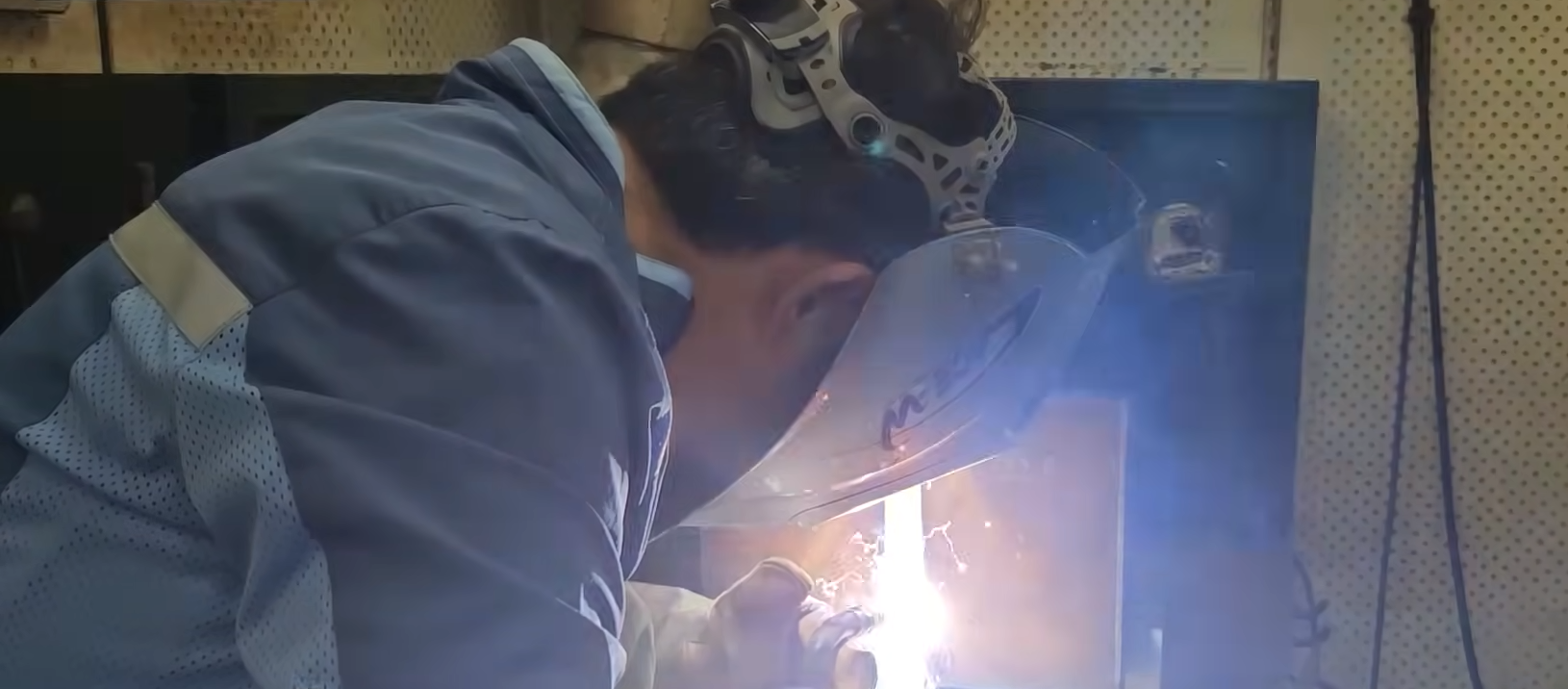It’s easy in our modern world of automation, machines, and artificial intelligence to overlook the traditional value of a master craftsman. But highly skilled human expertise is still essential to implement various aspects of construction.
Welding is one such skill that is used to make a variety of products all around us, including the home appliances we use every day, transportation options like cars and trains, and the construction of structures such as buildings, bridges, and roads. Especially in construction, welding needs to be masterful because if it isn’t perfect, a structure might be at risk of collapse. Although welding is sometimes done with automated machines, it still heavily relies on the delicate role of a human hand.
Selected by the Korean government as a master craftsman of the year, Jae-hoon Cho of Samsung C&T Engineering & Construction Group has 25 years of welding experience. Cho is so committed to his area of expertise that his sense of connection might be compared to the way he seamlessly joins metals together. This ability and experience has led him to being officially recognized as a master craftsman. Let’s find out what it takes to achieve this prestigious title as we delve deeper into Cho’s story.
Why skilled welding makes all the difference
Cho is not only kept busy with his welding work, but also passing on the skills and knowledge he has accumulated throughout the world. It is this passion for welding that makes such a difference.
“I find my work on a construction site to be so rewarding. Enjoying what you do and seeing the results simultaneously improves productivity and quality. And that is what also drives to me share this passion with others,” Cho says.
The skills of welding that Cho appreciates so much have a history dating back to ancient blacksmiths using heat to join metals. In the construction industry today, various kinds of welding techniques support the creation of everything from vast bridges and apartment buildings to pipes and power plants.
Effective welding ensures that these structures remain strong and stable. An expert is required at each step of the way, starting with deciding what type of welding is needed for a specific application. They have to call on their extensive training and experience to ensure structures are properly joined, as well as being conscious of more immediate safety concerns. Proper precautions and protective equipment are needed to deal with welding risks like electric shocks, fires, and unhealthy exposure to toxic fumes.
But among the skilled welders of this world, how do they earn recognition as a master craftsmen? In Korea, they are selected by the Ministry of Employment and Labor and the Human Resources Development Service of Korea, with the goal of stressing the social value of skilled craftsmen. Based on Cho’s status as a top-level welder, he was among 16 master craftsmen of Korea named in August 2023.
Becoming a master through an entire career of dedication
Cho far exceeded the 15 years of experience required to be considered as a master craftsman. Looking further at the career that has led him to be recognized, it has been impressively diverse.
“I have been able to build varied experience through Samsung C&T projects across the world. This has allowed me to accumulate problem-solving skills and serve as a great foundation to becoming a master craftsman,” Cho reflects.
To provide some practical examples, Cho registered six of his own patents for improving field welding construction and inspection methods, including automatic pipe welding devices. Specifically, he developed an orbital automatic welding method for reactor coolant piping.
In addition, he’s passed on technologies to domestic and overseas sites such as nuclear, thermal, and LNG (liquefied natural gas) power plants, high-rise buildings, and steel bridges, as well as handing field customized technology and special steel knowhow to overseas and domestic partners in Algeria, Singapore, Taiwan, Turkey, and Vietnam. Moreover, Cho contributed to quality standardization through the establishment of Welding Procedure Specification (WPS) and Procedure Qualification Record (PQR) welding guidelines.
Future aspirations as a master craftsman
Going forward, Cho’s keen to continue mentoring others, including helping to support training at partner companies so as to contribute to the coexistence of larger and smaller corporations.
“I am very proud of the path I’ve chosen and I want to contribute to the further development of welding, a fundamental industry in Korea, by continuously securing and passing on welding skills as well as publishing related books. I hope that my experience can help younger welders acquire techniques and skills more effectively and in a shorter period than I did,” he adds.
Cho’s idea of “giving back” isn’t limited to welding either. While working at Samsung C&T, he has regularly conducted donation activities to improve residential environments in underprivileged areas at home and abroad, insisting that he considers “everyone to be like family, even if it is not easy to volunteer while working.”
Ultimately, while he values the title of master craftsman as “an honor,” he won’t dwell on that for too long. Rather, he sees a new role in this recognition that makes him even more determined to succeed while donating his talents in the future.









